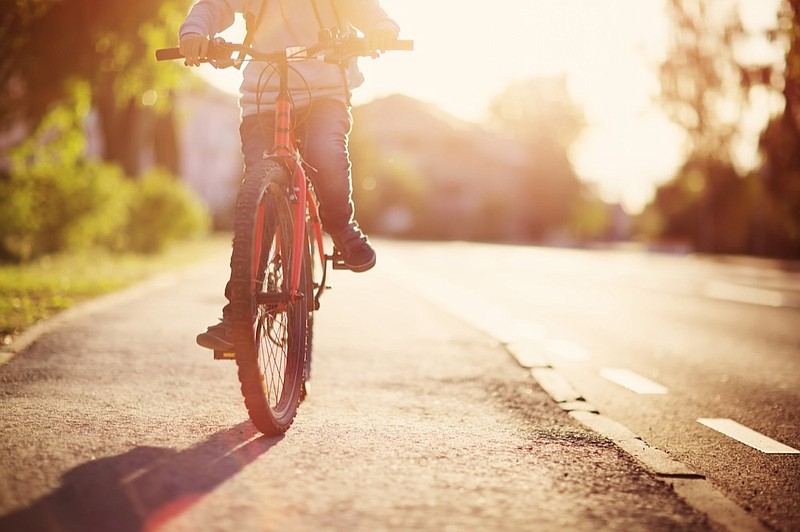When you think of great American biking and walking communities, you might think of Portland, Ore., or New York City. But those are far from the only examples that we can follow as we make our own communities more livable. In fact, some of the most practical, comfortable communities for biking and walking in America aren't cities at all.
I've been in the Navy, both active and reserve, for more than 15 years. In that time, I've been on more bases than I can count. Most full-sized bases are like little towns, complete with grocery stores, schools, doctor's offices, restaurants, housing and so on. While all the bases see plenty of car traffic, they all are designed to be safe for people on foot.
Their culture of pedestrian safety only stands to reason. Bases need to protect troops to march and run along roads. Many of the service members fresh out of boot camp don't have cars, but everyone -- on up to generals -- knows what it's like to walk or jog across the base. And they don't have to give it a second thought. As an organization, the military values its personnel above all else.
Most recently I lucked into orders to do a two-week training on Marine Corps Base Hawaii, a base on Oahu affectionately known as "K Bay." The layout there was particularly impressive. Almost every crosswalk was enhanced with flashing beacons. The main street on base recently had been slimmed from four lanes to three to make space for nice, wide bike lanes on each side. I saw young kids out on their bikes as well as muscled-up Marines pedaling their way to the gym or to buy groceries or to the beach.
Drivers keep their speed calm, rarely pushing past 25 mph. Everyone knows the base police aren't fooling around.
On my last day on the island, I got a chance to meet the base colonel, who out-ranks me by about a hundred paygrades. I complimented the apparent efforts toward safety and walkability on his installation. And I asked him about his philosophy on planning improvements for the base. He chuckled and said that any time he gets complaints about there not being enough parking, he says, "We don't have a parking problem. We have a walking problem." That is to say, if people feel good about walking, they can park further away. Rather than build more expensive parking, the base spends a little bit on improving sidewalks and crosswalks to entice people to walk.
Inspiration can come from anywhere. And while I don't think we need to plan out communities exactly like military bases, there are certainly lessons we can learn from an organization that treats cars like threats and pedestrians like heroes.

